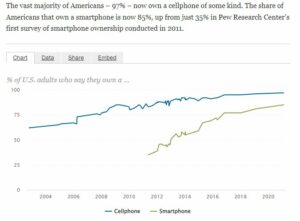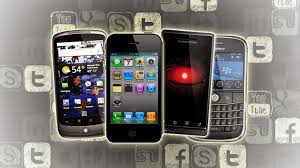Phone Forensics – Bits & Bytes
Title: Unlocking the Secrets: Understanding Cell Phone Forensics
Introduction to Cell Phone Forensics
In the modern digital age, cell phone forensics has become an essential tool in the field of investigations. This branch of forensic science delves into the extensive data available on handheld devices—ranging from simple flip phones to advanced smartphones. As technological advancements continually reshape the landscape of communication, the capability to perform thorough cell phone examinations has never been more critical.
Cell phone forensics encompasses various procedures that ensure the recovery of crucial data from devices, regardless of their complexity. By leveraging the similarities in operating systems across devices, forensic experts can often expect comparable results. This consistency allows investigators to adopt standard protocols, making the process more efficient while uncovering vital evidence.
The Comprehensive Nature of Cell Phone Examination
A complete cell phone forensic examination involves a deep dive into every aspect of data availability on a device. Investigators work meticulously to retrieve information from all possible sources, including the device itself, Micro SD cards, and the SIM card. While the methods employed are consistent, the results can vary significantly based on the model and age of the device being examined.
For instance, basic texting phones might not offer the same breadth of data as smartphones, which are essentially mini-computers in their functionality. The level of detail retrieved can also depend on various factors, such as whether data has been deleted and how actively the device is used after that deletion. Thus, understanding the unique characteristics of each device allows investigators to tailor their approach, ensuring a thorough analysis.
Understanding Data Retrieval Challenges
When dealing with deleted data, the timeline for deletion plays a crucial role in the recovery process. If a user frequently updates their device with new information, this can quickly overwrite previously deleted content, thereby complicating retrieval efforts. By understanding user habits and device functionalities, cell phone forensic experts can develop targeted strategies for data recovery.
Additionally, it’s necessary to stress the importance of initial data sources, particularly the Micro SD card. Even the simplest phones often include storage options that can house valuable evidence. Investigators must begin their assessments by examining these external storage avenues to maximize the potential for a complete data retrieval during cell phone examinations.
The Role of SIM Cards in Forensic Analysis
Another vital component of cell phone forensics is the SIM card. Used primarily by GSM carriers, SIM cards can provide a limited yet relevant snapshot of phone usage. Notably, SIM cards differ from SD cards and serve distinct purposes in data storage and communication.
As technology evolves, both GSM and CDMA phones now utilize SIM cards, facilitating international compatibility and flexible carrier options. Understanding the intricacies of SIM technology has become essential for forensic examiners. By analyzing this data, investigators glean critical insights into user behavior, call histories, and SMS interactions—each of which may prove significant in the context of various investigations.
Cell phone forensics is an increasingly vital investigative tool, contributing immensely to uncovering hidden narratives behind digital communications. With the rapid advancements in mobile technology, professionals in this field must remain adept and knowledgeable to adapt to emerging trends. At Leverage Investigations, our skilled forensic examiners specialize in conducting thorough evaluations of cell phone data, ensuring that no stone is left unturned in the pursuit of truth.
Unlocking Secrets: The Power of Cell Phone Forensics in Investigations
Introduction to Cell Phone Forensics
Cell phone forensics is a rapidly evolving field that has transformed how investigations are conducted. With the adoption of smartphones and the subsequent explosion of digital communication, these devices have become treasure troves of valuable information. During a cell phone examination, forensic experts can retrieve a myriad of data types, even if they were deleted. This capability plays an integral role in both criminal and civil investigations, providing a comprehensive look at an individual’s digital footprint.
Understanding what kinds of data can be pulled from a device is crucial. Whether it’s call logs detailing communication times and durations, text messages that capture the essence of conversations, or GPS locations that map movements, the data recovered can significantly impact a case. Investigators can reconstruct timelines, verify alibis, and connect suspects to events—all from a single device.
The Scope of Retrieved Data
The potential data obtained from a cell phone encompasses more than just the basics. Call logs reveal patterns of behavior; text messages can expose motives; and multimedia communications through MMS or videos contain vital context. Furthermore, browser histories and internet searches provide insights into an individual’s interests and actions leading up to an event.
Other valuable sources include location data sourced from GPS tracking, which can establish geographic connections to certain incidents, and geo-tagging found in photos and videos that might indicate a person’s whereabouts at a specific time. Email messages, contacts, and digital interactions provide additional layers, painting a fuller picture of relationships and activities. As a result, the information recovered during a cell phone examination can be the key to unlocking a case.
The Importance of Skilled Forensic Tools
Not all investigations yield the same results—much depends on the tools employed by forensic experts. Your average investigations firm may not possess the state-of-the-art resources necessary for thorough cell phone downloads. At our facility, we take pride in being on the forefront of this technology, utilizing multiple systems that work in tandem to produce accurate and reliable results.
Our team consists of certified examiners who are well versed in the ever-evolving landscape of cell phone forensics. We do not participate in outsourcing; our dedicated in-house capabilities mean that we can ensure a consistent quality of examination. Relying on a wide array of forensic tools allows us to approach each investigation with precision, much like a skilled craftsman choosing the right tools for the job.
The Challenges of Data Retention
As the mobile phone industry continues to grow, so do the challenges related to data retention. Cellular carriers are reducing the amount of information they keep, primarily due to the sheer volume of data created daily. Once data is purged from a carrier’s system, there is little hope of recovering it—highlighting the importance of a prompt cell phone examination.
For example, while you might be able to access the last 30 days of activity in a consumer record, crucial content may be lost. Carriers only provide limited information without legal assistance, such as a search warrant or court order. Ironically, one may need authorization to access their own records, emphasizing the complexities surrounding digital evidence in today’s legal landscape. That data can be obtained through a forensic download of the device.
Beyond Cellular Connections
It’s essential to recognize that cell phones do not merely rely on cellular networks for communication. Many applications utilize data connections—allowing users to chat, text, and share files without generating carrier logs. Apps like WhatsApp, Facebook Messenger, and others circumvent traditional cellular reporting, making it impossible for carriers to provide records of those interactions.
This nuance illustrates the critical role of cell phone forensics in comprehensively examining a device. The ability to access activities conducted through such applications can make or break an investigation. Without the insights from a forensic examination, investigators could miss significant leads and connections that exist outside traditional cellular data.
The Power of Cell Phone Examination
In conclusion, cell phone forensics is an invaluable asset for modern investigations. From uncovering deleted call logs to extracting multimedia evidence, the breadth of data recoverable is staggering. However, the true power lies in the analysis and interpretation of this data—crafting a narrative that helps elucidate the facts of a case.
With an emphasis on the right tools and expert knowledge, we ensure that every investigation stands on a solid foundation of evidentiary integrity. The importance of timely forensic examinations cannot be overstated, as they may ultimately determine the outcome of critical cases. In a world where digital footprints can speak volumes, the role of cell phone forensics has never been more vital.
Interesting Facts
Cell phone Statistics
As of January 2014:
- 90% of American adults have a cell phone
- 58% of American adults have a smartphone
- 32% of American adults own an e-reader
- 42% of American adults own a tablet computer
- Cell internet access:
- As of May 2013,
- 63% of adult cell owners use their phones to go online.
- 34% of cell internet users go online mostly using their phones, and not using some other device such as a desktop or laptop computer.
The vast majority of Americans – 97% – now own a cellphone of some kind. The share of Americans that own a smartphone is now 85%, up from just 35% in Pew Research Center’s first survey of smartphone ownership conducted in 2011.

What is a Cellular Extraction
How is a forensics cellular extraction done?
Device must be isolated from any network connection to prevent any changes in the data stored on the device. Any extracted data must be an identical copy of what was on the device. This includes un-allocated (unused or deleted) Space. When you do a copy paste you are only copying the visible file structure, NOT the hidden files and not the un-allocated space. Extraction software must be able to acquire a file system, or image of the device. The Software used must have the capability to then re-organize to copied data (without changing a and allow the examiner to build a forensics report that is easily understood by the common person, as well have a forensic trail (called Hash Marks). The system and procedures used must be commonly accepted within the forensics community. In laymen’s terms, it has to of proven itself with its technology, software, and forensics process. A “new” product will need to be tested and compared with standard results. Then results need to be proven to have been acquired within a forensics means. (did it get data without compromising the evidence).
What is a Forensic Exam
An exam is a slow and methodical investigative sifting and analyzing the data acquired from a forensics extraction. If you are looking for a specific set of parameters then that is not as slow of a process as you would think. To be a forensic exam, everything must be examined and the forensic examiner should not be just capturing one data set to be analyzed and reported on. The data is correlated and bookmarked within the report so it can be easily referenced as evidence. Software and hardware from Cellebrite, Oxygen Forensics, SecureView, Belaksoft, XRY, Paraben, EnCase, and other similar brands provide excellent results. There is never 1 solution that solves all phone forensics exams, restrictions from the device model and operating system version can affect what each varied forensic software can obtain from the records.
Why is a Forensic Method of Extraction Critical
Once that device is connected improperly, anything acquired can be called into question in court. If the software is NOT within the community standards or experimental, it should not be the primary point of information gathering and investigation. If this is a criminal trial, or a substantial civil trial; that could be the difference between freedom or a large financial loss or gain. That data can be considered questionable and that act (improper exam) can taint the evidence within the device itself, a lawyer could argue that the improperly done exam changed the original device records. A forensic device is first design around preserving electronic evidence and NOT altering the data, then copying the unaltered data to a new destination storage media for exam. That copy will match forensic hash marks with the original if the copy needs to be verified. The Forensics process should be repeatable.


